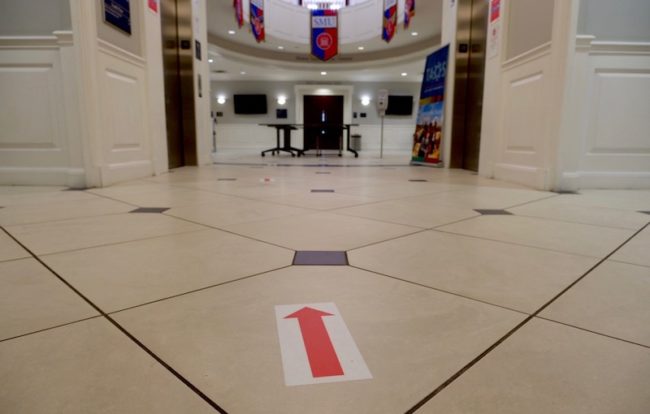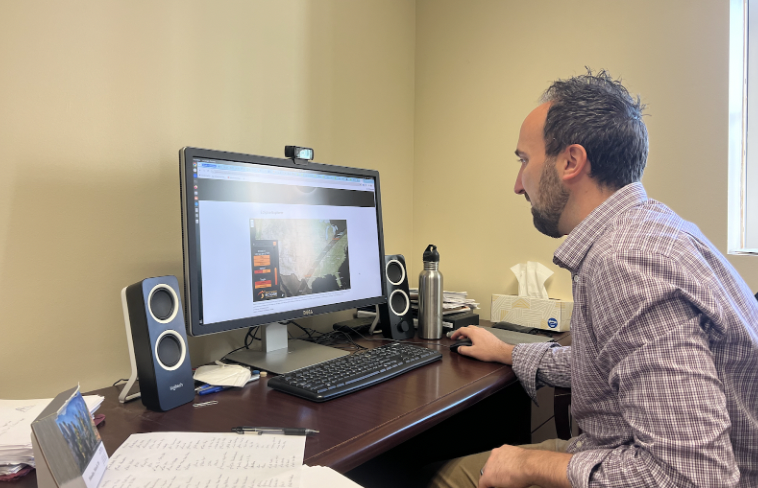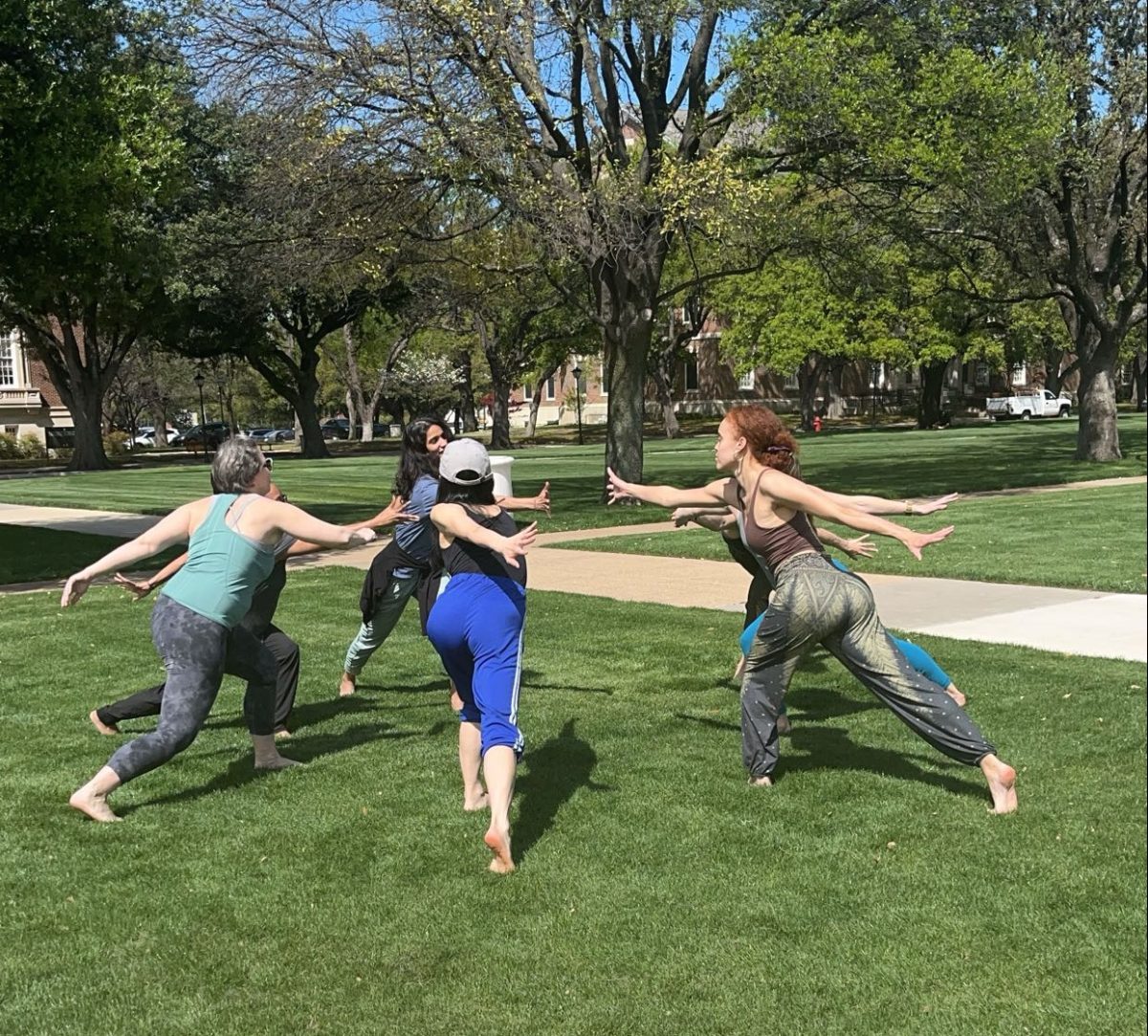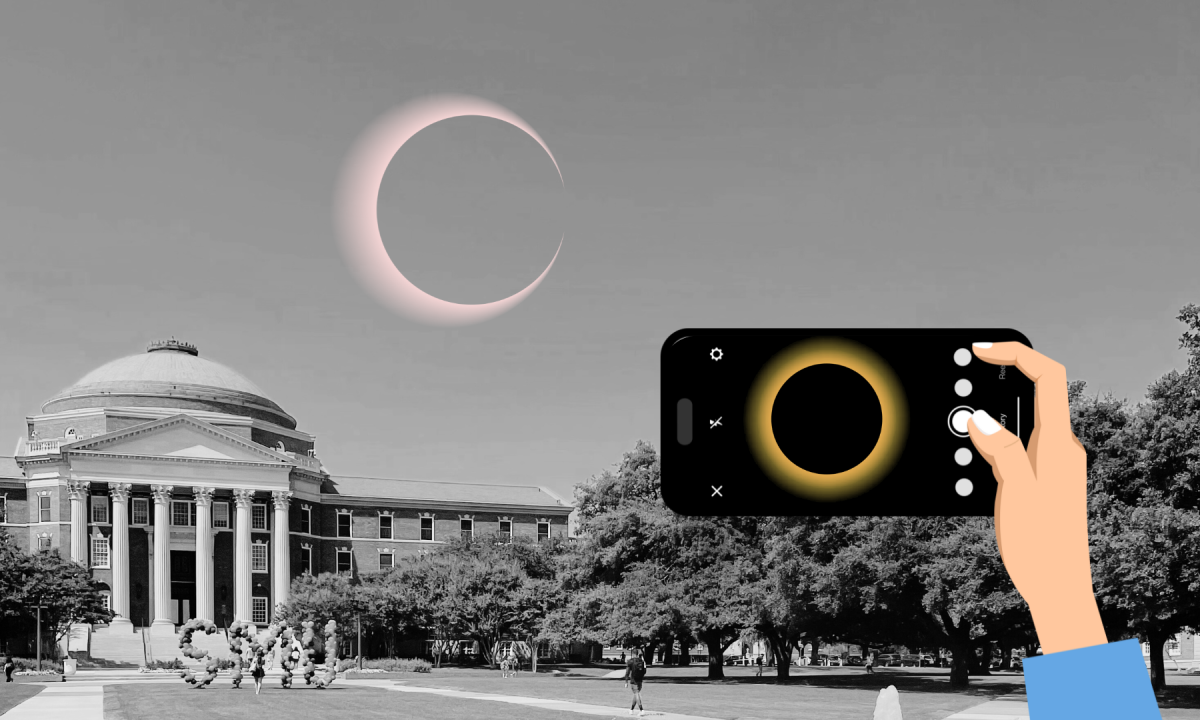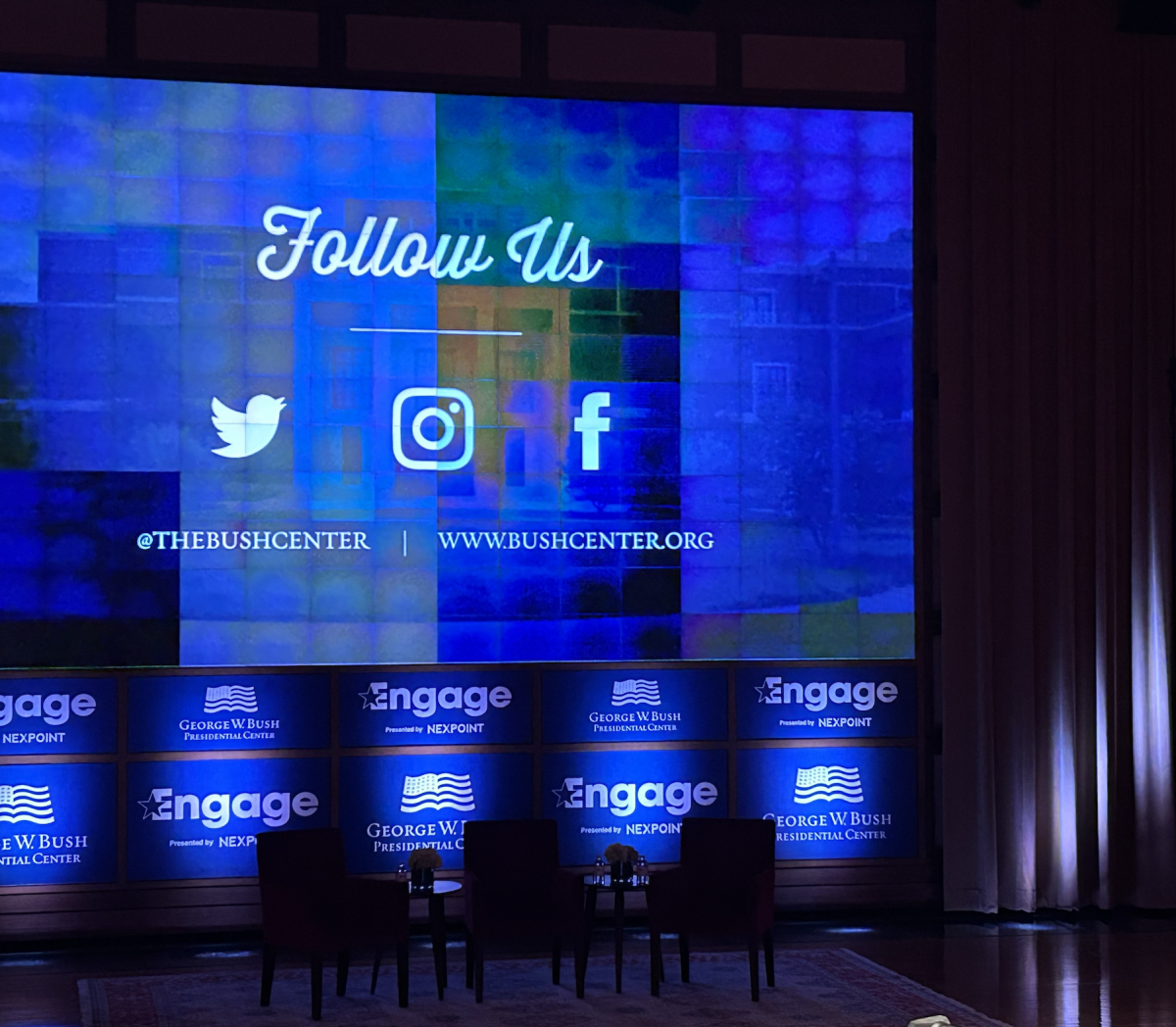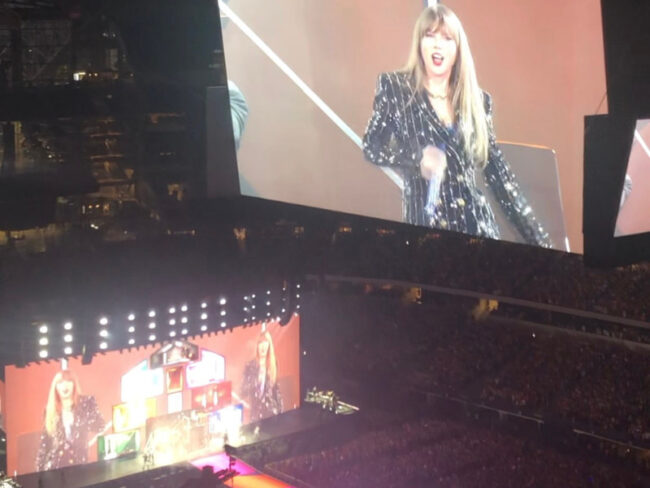By: Aurelie Thiele
First, let’s get some things out of the way.
An institution that continues to plan for an August 15 Commencement is an institution that does not believe that the threat of COVID-19 is lethal — or perhaps, some key advisers do not believe that the threat of COVID-19 is lethal.
An institution that does not mandate facial coverings indoors, against the advice of medical professionals, is an institution that does not believe that the threat of COVID-19 is lethal.
An institution that forces its high-risk staff who are seeking to telecommute to fill invasive “disability” forms allowing SMU to talk with their health care providers — although being at high risk of COVID-19 is not a disability — is an institution that does not believe that the threat of COVID-19 is lethal.
Instead, it is an institution that is trying really hard to return to the pre-pandemic status quo, as if it could wish COVID-19 away into something like the flu. But SMU cannot downgrade COVID-19 with a magic wand.
An institution that does not act like the threat of COVID-19 is lethal — in spite of the enormous scientific evidence to the contrary — poses a health threat to its students, faculty, and staff, as well as its neighbors in University Park and the surrounding Dallas area. It also opens itself to ridicule from its competitors and neighbors. Universities such as UT Austin and Rice, which have taken a very different approach, show what it looks like when universities put the safety of its students, faculty and staff first.
A university’s greatest asset is the collective mind of its students, faculty and staff. This intellectual asset should be protected at all costs. Instead, SMU is behaving as if students won’t come back if they can’t indulge in the fantasy that COVID-19 is not a big deal. As if staff will wallow into utter laziness if they are allowed to telecommute because of the pandemic. What an awful admission to make – that administrators believe they have inspired so little loyalty that staff cannot be trusted to do their job in these trying times if SMU is not there to keep an eye on them.
So far, SMU has weathered the COVID-19 storm better than other universities which have suffered furloughs and layoffs. Personally, I understand the many reasons (some more compelling than others) for a return to on-campus instruction. But it also seems that the recent roadmap describes something akin to a “return to (almost) the way things were”. For instance: emphasizing on-campus classes before admitting that those classes will also have to be broadcast online for students in self-quarantine. Then, insisting that office hours will be both in-person and online.
In-person office hours, really? The CDC defines close proximity as spending more than 15 minutes from someone within 6 feet…it seems unlikely that we, faculty, will let students into our offices unless we start timing how long they stay and tell them to pack up after ten minutes. I doubt students want to be treated that way.
Leading the SMU community to believe the situation will be “almost normal” in the fall is counterproductive: COVID-19 is still here. Cases are rising. Dallas County had to reimpose its mandate of facial coverings in businesses. Many universities will require facial coverings throughout the fall semester.
We risk becoming the laughing-stock of academia if SMU does not start taking COVID-19 as seriously as its peers. In Galileo’s time, flat-earthers genuinely believed that the Earth was flat in spite of rising evidence to the contrary. If they had let go of that belief a little earlier, they would not have made their way to posterity as a symbol of erroneous thinking.
I, for one, would very much like to restart face-to-face instruction at SMU if it is safe to do so. I want to teach students in-person, or as much in-person as possible. In addition to the pedagogical reasons for preferring face-to-face instruction, I like feeling the energy in a classroom.
SMU truly is a special place. Many universities only care about research and view teaching as something to be put up with. Others only focus on teaching without producing any worthwhile research. We are that rare kind of institution where faculty care both about producing new knowledge via research and imparting existing knowledge through teaching. This makes SMU uniquely positioned to become a world-renowned institution in the years ahead.
Some of my colleagues relish the challenge of leading SMU into top-notch 21st century teaching: they want to give high-touch online teaching a try and pioneer new ways of educating students that would further establish SMU’s superiority as an institution of higher learning.
Such teaching innovations in these days of the coronavirus are only possible when the people who are on the ground delivering the education – the faculty – are closely involved in devising the new teaching plan. Administrative input is critical to ensure business continuity and campus health after the healthy reopening of the campus. However, faculty input has been insufficient as far as academic continuity is concerned — perhaps precisely because of that subcommittee’s very name: academic continuity. Should we try to keep everything the same as before COVID-19 or should we use these trying circumstances to demonstrate SMU’s unique value to students?
Maybe the best thing that SMU can do for itself at this time is to not keep things the way they were. We, the faculty, are best positioned to know how to deliver top-notch instruction on the ground in spite of the trying circumstances. Administrators should agree on a broad framework and let us fill in the details. SMU has to trust that with the proper time to prepare, faculty can deliver the superb educational experience we are known for, whether online or in-person.
Here is an example of innovation that we could try: a colleague suggested to bring students back to campus and make all courses online, like Harvard, but assign a faculty mentor to each student for close interaction. With SMU’s small-class sizes, we are in a unique position to achieve this. In fact, I would like to advocate for each incoming student to be assigned a faculty mentor in their area of interest. Students’ checking in with their mentor could be as simple as sending them an email every other day about which lectures they attended and how they are experiencing the campus so far.
There is no doubt that the situation in the United States is deeply concerning, particularly at universities. There is a widespread prediction that college students will most likely be asymptomatic carriers of COVID-19. If those students don’t respect social distancing, their professors, who are in a much more vulnerable age group, are at risk of developing severe complications from the disease.
I hear that some SMU students are excited at the prospect of more outdoor spaces on campus, which are made necessary by the coronavirus. I also hear that some of my colleagues worry they will need a lung transplant by the end of the fall semester should students not abide by social-distancing rules. Clearly there is a major asymmetry in stakes here. But – believe it or not – there is a plan to keep everyone safe and there has been one for weeks. It is a pity it has not been better communicated to the SMU community. This would have assuaged a lot of worries at a time where some believe they are risking their health for good. Dallas County would not let the campus resume face-to-face instruction if it did not believe it was safe.
So, why the delay in communicating the plan? Certainly, many guidelines to safeguard the health of the campus community may seem too “into the weeds” for the top decision-makers, most of whom may understandably prefer the big picture. But on-campus instruction starts in two weeks with July term. Now would be a good time to inform the professors who will be teaching that they will have to file seating plans and tell students in their courses to keep the same spot throughout the semester for contact tracing purposes. Or do SMU administrators feel that, like masks, requiring students to sit in the same chair week after week is “not the Texas way”?
UT Austin and Rice show us that Texans don’t let Texans get COVID-19. It is a pity that SMU, which cares so deeply about its students, is not in the driver’s seat here. But maybe, like in the best NASCAR races, SMU will come from behind and win the race in the last lap, allowing its faculty to try new teaching methods, both online and in-person, that would cement SMU’s reputation for exceptional instruction. That would truly be a magical moment.
Professor Aurelie Thiele is the Faculty Senate President at SMU, and an associate professor at Lyle School of Engineering’s Department of Engineering Management, Information, and Systems.
The Daily Campus welcomes opinion contributions from students, faculty and community members. Submissions should be no more than 1000 words and are subject to copy editing. Please email submissions to [email protected], and include a cell phone number and a short biography.








